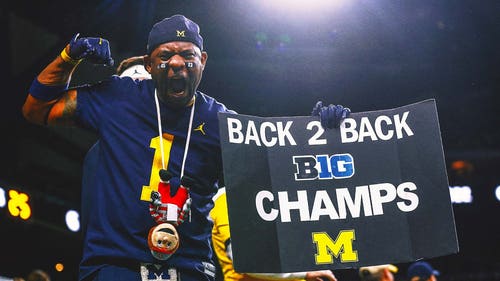
Big Ten coaches find 4-game redshirt rule a mixed blessing
COLLEGE PARK, Md. (AP) — Gone are the days when the final word on a redshirt designation comes solely from the head football coach.
A new trend has gripped the sport, one in which the athletes are much more inclined to decide whether it's worth cutting short a season to preserve a year of eligibility. The shift stems from the new redshirt rule, passed by the NCAA Division I Council last year, which allows players to participate in any four games in a season and still use a redshirt that year.
While some Big Ten coaches have used the change to their benefit, others have experienced a stunning backlash. Such is the case at Rutgers, where quarterback Art Sitkowski and running back Raheem Blackshear opted out of the 2019 season with the Scarlet Knights logging a 1-3 record and seemingly destined for another last-place finish.
A precedent has been set, and there's no turning back.
"I think the players kind of hold the power now in that, if they decide or choose not to play, there's really nothing a coach can do," Maryland coach Michael Locksley said.
Sitkowski and Blackshear took the redshirt after coach Chris Ash was fired. Interim coach Nunzio Campanile got the news shortly before his first game against Maryland, a 48-7 defeat.
"Am I disappointed by it? Incredibly. Do I understand it? I guess so," Campanile said then. "I guess that's the way the world is now."
In Houston, talented quarterback D'Eriq King and receiver Keith Corbin, both seniors, both said they would take a redshirt year with the intention of coming back next year. They made their announcements after the Cougars dropped to 1-3. Last year, quarterback Kelly Bryant left Clemson after losing the starting job and the new rule allowed him to have a full year of eligility as a graduate transfer at Missouri.
In his first year at Maryland, Locksley has formed a close rapport with his players. Although the Terrapins (3-4, 1-3 Big Ten) have dropped four of five and are likely to miss out on a bowl trip, no one has asked for a redshirt.
But if it happened, Locksley said, he would take several steps before deciding whether to let the player hang around or cut him loose.
"That would be hard for me to speculate because there are a lot of things that go into that decision," he said. "I think I would take each instance on a case by case basis — meet with the kid, meet with the parents, meet with our team and then ultimately make the best decision for the program."
Maryland running back Javon Leake would back a teammate who took a redshirt in the middle of the season.
"I feel like it's something personal with those guys," Leake said. "Everyone has a reason for doing what they do, so I feel like if a guy wanted to redshirt he just wanted to take some time to develop. I don't think it's a bad idea. I wouldn't have a problem if one of my teammates did it."
Minnesota coach P.J. Fleck believes keeping an open line of communication is the key to allowing him to redshirt a player without resistance, and to avoid having an athlete make the decision himself. It's a new day for college football, and Fleck has adjusted accordingly.
"When we were growing up, it was just 'because I said so.' That doesn't fly with these young men in 2019," said Fleck, whose unbeaten squad faces Maryland on Saturday. "They want to know why. And as long as you know why and you tell them why, usually you have a pretty good understanding between you two and a mutual agreement of, this is what we're going to do."
The four-game redshirt rule can be a blessing for a coach, especially one trying to build a program with freshmen and sophomores. Locksley has carefully planned how to best use his young players without necessarily burning a year of their eligibility.
"I do think the redshirt rule is good for football, coaches and players," Locksley insisted. "We have a plan how we want to play players based on spacing out the four games. You like to play some early, save some for later in the year so that they still feel part of it."
The way it stands now, the current redshirt situation can be beneficial to a coach — until it isn't. What happened at Rutgers could occur most unexpectedly at any school in the country, including the Big Ten.
"It's a good rule, but in terms of how it can disrupt a football season might be another way to look at it," Michigan State coach Mark Dantonio said. "I'm just going to try and take the high road with everything and say, OK, this is a decision that young people make and you've got to deal with it and move forward. Look at it as an injury."
__
AP Sports Writers Dave Campbell and Larry Lage contributed to this story.



